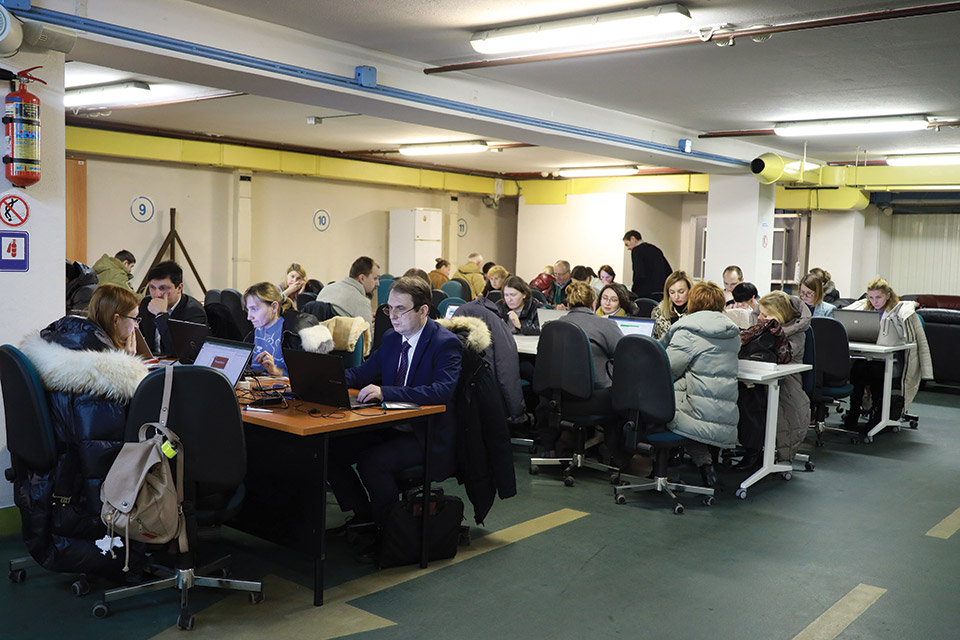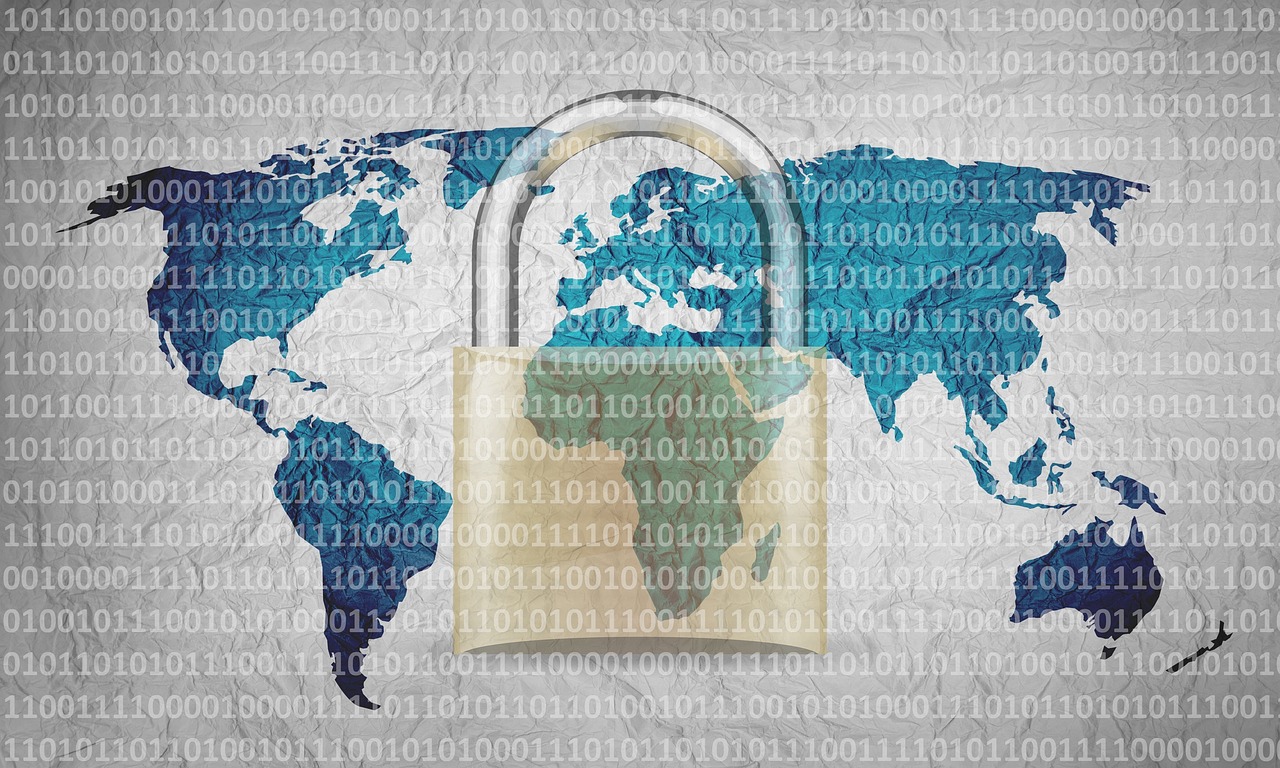Halfway through his interview with Euromoney, Andriy Pyshnyy – National Bank of Ukraine governor for the past year – leaps up from his seat and walks round the table to where I’m sitting.
He takes out his phone and gestures to photos of the central bank in Kyiv that illustrate just how different it is where he works compared with other central bank governors around the world.
“That is the entrance to the central bank, and that is the corridor I walk down every day,” he says, showing photos with sandbags piled up almost to the ceiling.

“That is where our staff work when there’s an air raid and when bombs are falling from the sky,” he says, pointing to rows of crammed desks in an underground car park.

“We never stopped working, not for a minute,” he says of the early days of the war – when air raids happened several times a day.

He swipes on. “This is what it looks like when we’re working during a blackout, after Russia has bombed electricity plants to plunge whole cities into darkness. These are children at the national bank when their schools were closed, or when they’ve had to stay overnight with their parents because power blackouts have caused not just a lack of light but also of heating and even water in their homes.”

Pyshnyy, a former politician from the pro-West wing of Ukrainian politics, was previously chief executive of state-owned Oschadbank, the country’s second biggest bank by assets. To say his appointment as NBU governor in October 2022 was in difficult circumstances would be a gross understatement, and not just because of the war.
Just before Pyshnyy’s appointment, former governor Kyrylo Shevchenko left the bank suddenly after being targeted by anti-corruption investigators in a case concerning his former role at Ukrgasbank.
Pyshnyy is, moreover, a rare example anywhere in the world of a high-ranking official with severely impaired hearing. While he speaks through a translator, a colleague types out my questions to show to the governor as we speak. The governor’s hearing loss by no means gets in the way of lively conversation. And, clearly, it is nowhere near the most challenging part of the job.
Operational demands
Although the front line in the war had already moved far from the capital and towards the country’s south and east by October 2022, Pyshnyy arrived as central bank governor just as Russia embarked on a new strategy of targeting critical civilian infrastructure – especially the electricity network.
Bankers say this sparked a new wave of demand for cash, after the initial panic and mayhem of February 2022. Sudden and protracted losses of electricity meant people couldn’t pay for basic goods with cards, as retailers’ point-of-sale terminals didn’t work. The question then became whether or not banks could keep branch and ATM networks operating.
Pyshnyy’s response to this has been to roll out what the central bank has branded, in English, Power Banking – an initiative to make sure banks don’t simply shut their branches up and down the country when blackouts happen, but instead forces them to make the necessary investments and take the initiative to keep those branches open.
For systemically important banks in Ukraine, 35% of branches must be equipped with back-up generators and satellite internet access.
I want to share our experience because I believe it will make the global banking system stronger and better prepared for potential emergencies
Andriy Pyshnyy, National Bank of Ukraine
As the branch networks of retail banks typically have nowhere near this amount of back-up power and communication capacity, Ukrainian banks had to scramble to acquire and install generators and fuel storage at a time when getting goods into the country has been much slower than before the full-scale invasion.
The central bank also coordinated requests for hundreds of Starlink satellite dishes from Elon Musk’s SpaceX to ensure the branches could still access the internet when the normal telecommunications systems are down.
For Pyshnyy, the project’s success is a source of pride, as well as some regret about the need.
“Our Power Banking project is unique,” he says.
According to him, it is part of the reason why Ukraine is no longer just a recipient but also a donor of international technical assistance, thanks to the experience it has acquired of operating in such extreme circumstances over the past two years.
As he points out, blackouts might not only come from bombs, they can come from cyberattacks on the electricity grid.
“When I start talking about Power Banking to my colleagues from the IMF or other central banks, they are interested at first,” he says. “Then they realise that everyone can find themselves in a blackout. The threat is closer than it may appear. I believe that many central bank governors are now revising their protocols of continuous operations. I want to share our experience because I believe it will make the global banking system stronger and better prepared for potential emergencies.”
We are much better prepared for potential blackouts this winter
Sergii Iermakov, Ukreximbank
Cyberattacks that could bring down electricity grids are a real threat, including in western Europe, says Lorenzo Grillo, a cyber risk expert at US-based consultancy Alvarez & Marsal.
“Banks should be prepared,” he says. “They need, at least, alternative sources of electricity to cover outages, and they need to test that regularly. They also need to think about third-party suppliers of IT and telecommunications to understand if they also have alternative power-generation capacity.”
Grillo adds that banks are working partly under their own initiative and thanks to regulatory encouragement, including as part of the EU’s Digital Operational Resilience Act. He draws a comparison to the Covid-19 pandemic and last summer’s blockage of the Gotthard tunnel in Switzerland – events made worse by a lack of preparation, because they seemed so unlikely.
“Every company, including banks, should think not about the likelihood but the impact,” he warns.
Better prepared
In Ukraine, of course, these events are less of a risk and more of a day-to-day reality. Parts of the Odessa region, for example, were plunged into darkness for as much as a week last year.
“We are much better prepared for potential blackouts this winter,” says Sergii Iermakov, chief executive of Ukreximbank, the country’s third-biggest lender, also state-owned, speaking last autumn. “We are not facing such hard missile attacks this last year. But, nevertheless, we expect that the aggressor will do so.”
Building up an ability to operate during electricity and communications blackouts in Ukraine has consequently gone far beyond the backups for critical central functions and regional headquarters that one might find in other countries. The Power Banking network now covers 2,500 Ukrainian towns.
In 2014, the banking sector would not have been able to resist this level of war
Francis Malige, EBRD
Banks must not only open, but also treat other banks’ customers as their own, including the fees they charge, and they must clearly show which branches will operate in the event of a blackout – bringing private and state-owned banks together as a sort of new national utility.
“When we activate the Power Banking protocol,” says Pyshnyy, “those branches that are included in this nationwide chain effectively operate as one single bank in terms of provision of a range of basic services, like cash withdrawals.”
Those branches, he makes clear, should not only serve as a resilient source of access to cash. In a similar fashion to the post office, for example, Pyshnyy and his team have also worked to make sure that these Power Banking branches are a place of refuge for the community when people’s lights, water and heating have gone off: a place to warm up, have a hot drink, perhaps to charge phones. That has also required some reconfiguration of bank branches.
Generators are now a common sight outside large buildings in Ukraine, and more back-up power capacity in supermarkets and petrol stations, for example, should mitigate sudden demands for cash.
Into the cloud
Ukraine is by no means a laggard in digital payments. Still, key parts of the population, notably in more rural areas, continue to rely heavily on cash in their daily lives, and disruption to ground-based internet is still a possibility.
“There are several big internet providers here in Ukraine, and commonly their data centres are also based in Ukraine,” says Ukrexim’s Iermakov. “If something happens to this data centre, they will not provide their services. Several of them have back-up facilities, some of them in other European countries. Nevertheless, we may face troubles. That’s why we prefer to have alternative sources of communications.”
Meanwhile, the big Ukrainian banks carried out an extraordinarily rapid transfer of their IT operations to the cloud at the beginning of the war – going from almost nothing to almost everything in a matter of weeks.
What is the way forward for Ukraine’s banks?
At the start of the war, the expectation among some international bankers was that Ukraine’s financial sector would collapse, requiring a new wave of nationalization and restructuring. So far, that hasn’t happened, but questions remain about how the sector can cut non-performing loans and whether the true scale of the war damage has yet been realised.
Ukraine’s economy contracted by almost 30% in 2022, according to the World Bank. Any assessment of the damage to property in areas of the country controlled by Russia is difficult, if not impossible, and probably pointless for now.
People living in those regions can only get access to their money if they can get to Ukrainian-controlled territory.
If the war has not caused crippling levels of loan losses so far, however, bankers insist that is because of prudence, rather than forbearance. The need for massive fiscal injections, above all for the military, eventually flows into bank deposits. High interest rates on governments bonds have then bolstered bank profits and financed what they say are adequate provisions for damage to asset quality caused by Russia’s invasion.
Speed
Government programmes to encourage bank lending, as well as EBRD guarantees on loan portfolios launched last year, are to some extent helping the banks to maintain a book of new performing loans. Since the start of the war, according to the IMF, most new lending by banks has been within the government’s 5-7-9 programme, which includes state guarantees as well as subsidised interest rates.
Banks, however, will need to speed up reductions in the non-performing exposures cluttering up their balance sheets. Today, the main way forward is through bankruptcy proceedings. There remain numerous barriers to the development of a property NPL secondary market, including legal reforms and, perhaps above all, investor demand.
Nevertheless, Andriy Pyshnyy, National Bank of Ukraine governor, says the central bank is engaging with the World Bank on a programme to give investors the cover they need.
“We believe it can be a good platform for private capital to join efforts of Ukrainian banks concerning the borrowers that need to resume their payments,” he says. “To effectively sell their portfolios, there should be a market, and the security risks should be mitigated. Ukrainian assets should be interesting for private capital if the concept we are now developing with international financial partners works well.”
Previously, Ukraine’s regulatory framework meant banks had to store their data on servers inside Ukraine. After February 2022, that left them vulnerable to bomb damage and electricity outages and put them at potential risk of abuse by Russian occupiers. Now banks including PrivatBank, the largest lender, and Raiffeisen Bank Ukraine, the largest private and foreign-owned lender, are the subject of case studies for fast-paced cloud migration by the likes of McKinsey and Amazon Web Services.
“Ukraine did all this ad hoc, out of necessity,” says Oleksandr Pysaruk, chief executive of Raiffeisen Bank Ukraine and a former deputy central bank governor. “There was a restrictive legal environment for cloud services. When the full-scale invasion started, the central bank said that irrespective of the legal restrictions, banks should do it, because otherwise data may not survive, so we moved and then the legislation followed very quickly.”
Pysaruk believes Ukraine’s banking sector has served as a successful test case for cloud migration in the global banking sector, and Raiffeisen Bank Ukraine has become the main expert on cloud migration in the 12-country Raiffeisen Bank International network.
Pyshnyy tells a similar story. He says other central bank governors “should not be afraid” of the cloud, even if physical back-ups and other safeguards are essential, especially regarding the banks’ handling of personal data.
“The National Bank of Ukraine made the decision to allow the use of cloud technology under unprecedented conditions, but we believe this solution is working quite well,” he says.
The governor admits, however, that these services are expensive. Cloud service providers offered some discount out of the desire to help Ukraine and to test a project of this nature, but there is still some cost-benefit analysis to be done on what needs to migrate and what can remain on local servers, according to Pysaruk, even if all the critical functions are now cloud-based.
Ukrexim’s Iermakov adds that it is also much quicker to buy storage capacity on the cloud given the freight backlog on the Polish and Slovakia borders.
Before the invasion, he says it would take up to 30 days to import the necessary hardware for local, physical servers. Now, it can take up to half a year, versus about a day to upload data to the cloud.
Overall, Pyshnyy suggests banks in Ukraine have coped quite well with the shock of the invasion, even if the average non-performing loan ratio remains about 40%.
“Their provisions are adequate, capital is sufficient, and they are operationally profitable,” he says, discussing the first findings of a resilience assessment launched earlier this year and which the central bank is due to conclude in March.
It is something others also remark on – although they say things could have been very different without the drastic restructuring of large domestically owned banks in the previous decade.
“The war, if anything, highlighted the quality of the work that’s been done to the financial sector,” says Francis Malige, head of financial institutions at the European Bank for Reconstruction and Development. “In 2014, the banking sector would not have been able to resist this level of war.”
Liberalization
Despite a gaping fiscal deficit because of the war, inflows of international aid have allowed Ukraine to move away from monetary financing last year and even to start to move last autumn towards a flexible exchange rate and focus on inflation targeting.
“This was the medicine at the start of the war, but it may become more damaging for the economy,” says Pyshnyy, discussing the fixed exchange-rate regime the central bank adopted at the beginning of the war. “At the start of the war, Ukraine found itself under unprecedentedly tough administrative restrictions, limited resources, loss of export revenues, and an unprecedented deficit.”
Further liberalization will move in stages, linked to conditions, rather than specific dates, he says.
“Currency liberalization will directly depend on how well we can ensure exchange-rate and price stability under a managed exchange rate,” Pyshnyy says.
Nevertheless, he is aware of the risks of a more isolationist current in US politics: “Exchange-rate stability is ensured first and foremost thanks to international financial support that allows us to refill international reserves.”





